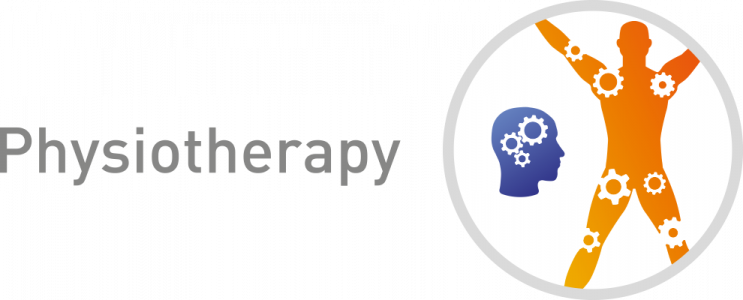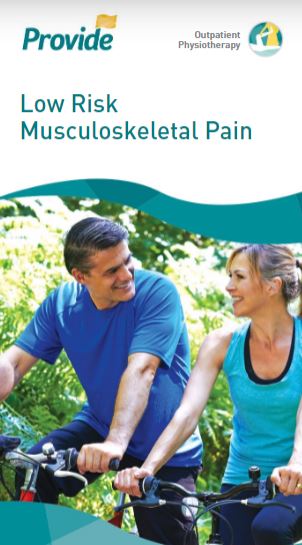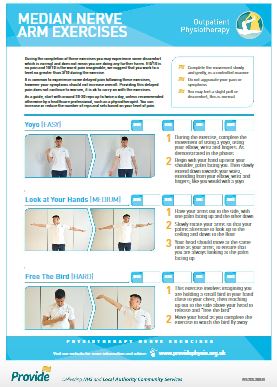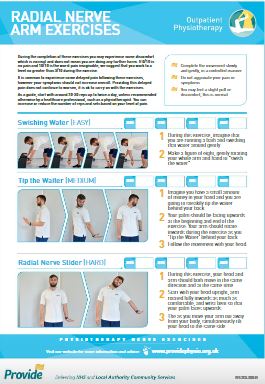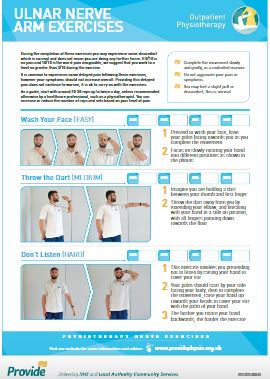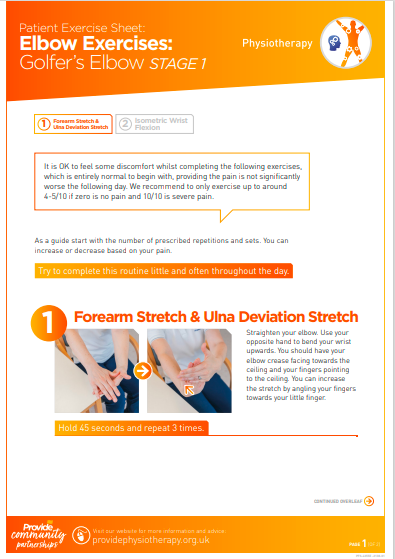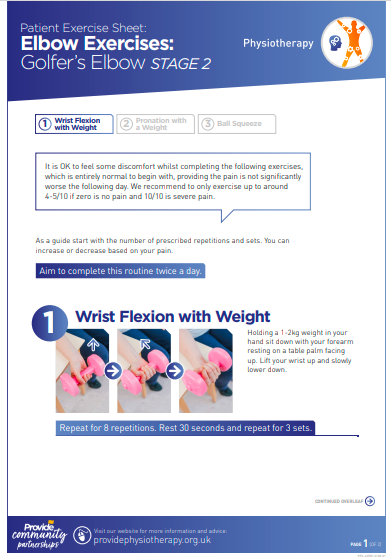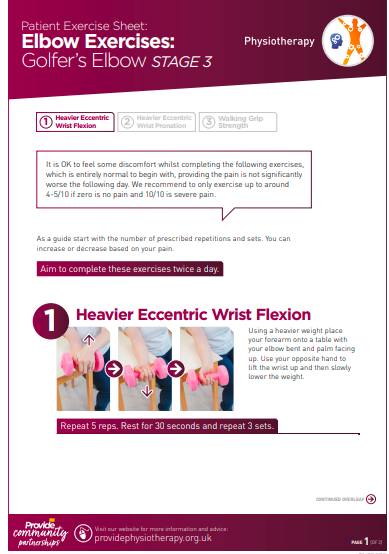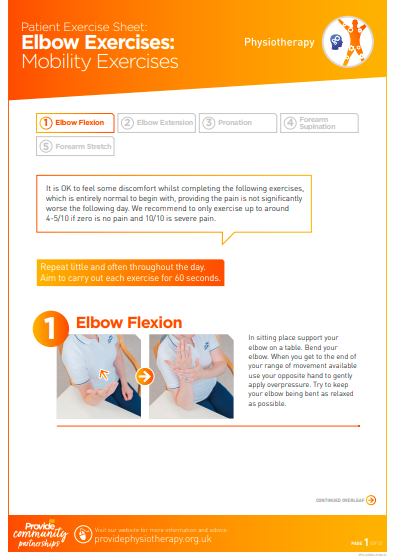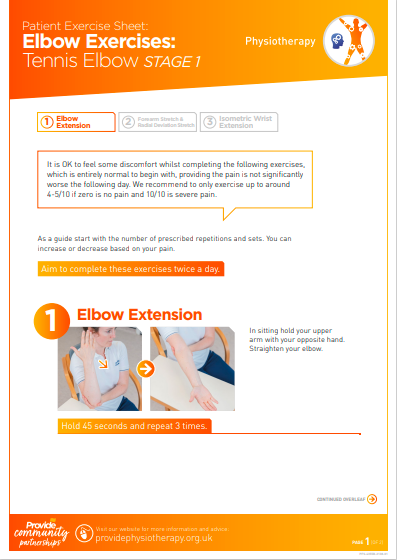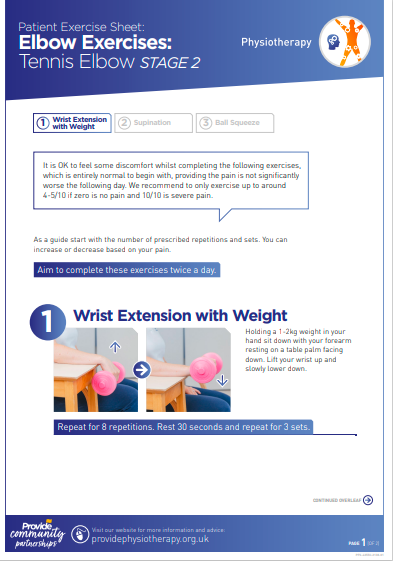Overview
Elbow pain is quite a common problem but it’s not usually a sign of arthritis.
The most likely cause of elbow pain is related to the tendons that attach to either side of the elbow and linked to repetitive or excessive use of the wrist and forearm muscles.
This will improve although can take several months to get better.
Find out more about your elbow pain in the other sections for further help.
If you are not sure of the cause of your elbow pain then click below to complete our Musculoskeletal Symptom Checker to learn about potential causes of your symptoms and the best ways to manage these in the Self Help section.
Types of elbow pain
Tennis elbow (also known as lateral epicondylitis or lateral epicondylalgia) is a common condition where pain is felt on the outer side of the elbow. It usually occurs as a result of overload of the tendon causing pain, swelling and tenderness around the outer elbow and forearm.
Although this condition can take months to improve, it usually gets better by taking steps to modify your activities initially and then build back up strength of the outer forearm muscles. Steroid injections or surgery are very rarely needed for treating tennis elbow.
This leaflet provides information, answers and self-help strategies regarding tennis elbow.
Watch this video which demonstrates exercises to help tennis and golfer’s elbow and reduce the chances of the pain returning in the future.
Click Here for early stage exercises that our physiotherapists would recommend for treating Tennis Elbow.
Golfers elbow (also known as medial epicondylitis or medial epicondylalgia) is a common condition where pain is felt on the inner side of the elbow. It usually occurs as a result of overload of the tendon causing pain, swelling and tenderness around the inner elbow and forearm.
Although this condition can take months to improve, it usually gets better by taking steps to modify your activities initially and then build back up strength of the inner forearm muscles. Steroid injections or surgery are very rarely needed for treating golfers elbow.
Watch this video which demonstrates exercises to help tennis and golfer’s elbow and reduce the chances of the pain returning in the future.
Click Here for early stage exercises that our physiotherapists recommend for treating Golfers Elbow.
Olecranon bursitis is a condition that causes swelling around the back of the elbow joint and pain when leaning on the elbow.
It can be caused by repetitive compression such as leaning on your elbow, or a one-off injury such as a blow to the back of the elbow – both of which can set off inflammation. It can also be caused by arthritis in the elbow joint or infection if the skin over the bursa has become cut.
Firstly try to stop doing the thing(s) that are likely aggravating it and most of the time the pain and swelling should then settle down. However, if your elbow remains swollen for a few weeks then you should speak to your GP as you may need some anti-inflammatory medication to help reduce the pain or swelling. Antibiotics are needed if the cause of the bursitis is an infection.
A steroid injection or aspiration (draining) of the fluid may also help to reduce the swelling. Surgery to remove the bursa is an option if all other treatments have been unsuccessful.
Osteoarthritis of the elbow occurs when the cartilage surface of the elbow joint is worn or roughened which causes pain and stiffness of the elbow joint.
This can happen because of a previous injury such as elbow dislocation or fracture however, most commonly, it is the result of a normal wearing of the joint cartilage from age and activity. This condition is quite rare as osteoarthritis usually affects the weight bearing joints of the body.
Pain killers can be used to reduce the pain and regular elbow exercises can help to reduce stiffness. Steroid injections can also be used to help reduce pain and inflammation. In very severe cases, an elbow replacement is possible but this is not a procedure that is done frequently like hip and knee replacements.
Click Here for further information on Osteoarthritis and ways to manage it effectively.
You can also Click Here for some simple exercises that our physiotherapists would recommend to aid with the management of elbow osteoarthritis.
Distal biceps tendinopathy is a rare condition that causes pain around the front of the elbow associated with bending the arm due to irritation of the biceps tendon muscle as it inserts into the elbow region.
Acute biceps tendinopathy may occur because of sudden overuse, especially among people participating in lifting and throwing sports, although it can also start gradually in the older population.
If pain persists despite modifying activities and slowly returning to normal activities, you may need to see a physiotherapist who can show you more specific exercises to help strengthen the muscle and reduce the pain.
Distal triceps tendinopathy is a rare condition that causes pain around the back of the elbow associated with straightening the arm due to irritation of the triceps tendon muscle as it inserts into the elbow region.
Acute triceps tendinopathy may occur because of sudden overuse, especially among people participating in lifting and throwing sports, although it can also start gradually in the older population.
If pain persists despite modifying activities and slowly returning to normal activities, you may need to see a physiotherapist who can show you more specific exercises to help strengthen the muscle and reduce the pain.
Is my elbow pain likely to persist?
Take our one minute test
This quick questionnaire can help you identify how likely your pain is to persist over the next 6 months and whether you may need some extra support. It has been developed by a team of experts from Keele University – Click here for more information about the tool.
The tool has been shown to be very useful for people with common Musculoskeletal pain to profile individual risk of having a poor recovery and to use as a guide in conjunction with support from a healthcare professional if necessary.
Try out the questionnaire for yourself to see how you score and to get further help and advice. It will also be useful to retake the questionnaire after you have learned more key facts about your pain, either from this website or from a healthcare professional, to re-assess in time whether your elbow pain problem is improving.
| For question 1 – 9, think about just the last two weeks: |
|---|
| Pain intensity 1. On average, how intense was your pain? [where 0 is “no pain”, 10 is “pain as bad as it could be”] |
| Select one of the options for each question below | Yes | No |
|---|---|---|
| 2. Do you often feel unsure about how to manage your pain condition? | ||
| 3. Over the last 2 weeks, have you been bothered a lot by your pain? | ||
| 4. Have you only been able to walk short distances because of your pain? | ||
| 5. Have you had troublesome joint or muscle pain in more than one part of your body? | ||
| 6. Do you think your condition will last a long time? | ||
| 7. Do you have other important health problems? | ||
| 8. Has pain made you feel down or depressed in the last two weeks? | ||
| 9. Do you feel it is unsafe for a person with a condition like yours to be physically active? | ||
| 10. Have you had your current pain problem for 6 months or more? |
High Risk
This test suggests you have some serious concerns about how well your elbow will recover.
This may be related to feeling low and anxious generally or by being afraid that you might have done something serious to your elbow.
It might help to discuss your concerns with a doctor or physiotherapist if things are still not improving over the next few weeks after following the advice and exercise in the Self Help section.
Also, visit the section on Persistent Pain for more information and support.
Most elbow problems are not related to a serious condition. Allowing yourself to move normally, without too much worry, will help your elbow to return to normal.
Painkillers often help you to move normally, while your elbow recovers.
If you are feeling low or anxious, whether this I related to your elbow pain or not, and you would like further help and support, visit NHS website – Health in Mind.
Alternatively, Click Here for an interactive online self-help programme to help manage symptoms of depression and anxiety.
Medium Risk
This test suggests you may have some doubts about how well your elbow will recover.
This may be related to feeling low and anxious generally or by being afraid that you might have done something serious to your elbow.
It might help to discuss your concerns with a doctor or physiotherapist if things are still not improving over the next few weeks after following the advice and exercise in the Self Help section.
Most elbow problems are not related to serious condition. Allowing yourself to move normally, without too much woryy, will help your elbow to return to normal.
Painkillers can help you to move normally, while your elbow recovers.
You might also want to access the Essex Lifestyle Service for further support and help on making healthy lifestyle choices and live healthier lives as this could be contributing to your elbow pain.
Low Risk
Congratulations! You most likely have the right ideas about your elbow pain, and feel in control of how you manage your recovery.
We all know an episode of elbow pain is very annoying, and at times extremely painful. Carrying on as normal and continuing to move your elbow allows the quickest recovery, and stops your elbow stiffening up and losing strength.
Keep going as you are, although read this short leaflet for more information and advice to get better even quicker.
You might also want to access the Essex Lifestyle Service for further support and help on making healthy lifestyle choices and live healthier lives as this could be contributing to your elbow pain.
Self help
Evidence has shown that people who understand their Musculoskeletal health problem and take an active involvement to help themselves have a much better outcome.
Here are some really helpful leaflets, videos and useful links to other websites that have been approved by our physiotherapists so that you can start getting better today.
This information is not intended or implied to be a substitute for professional medical advice, diagnosis or treatment if required. All content is for general information purposes only.
leaflets
videos
Exercises
Further Support
If your elbow pain is still not improving despite following the advice and guidance provided on the website and you score a ‘Medium’ or ‘High Risk’ when completing the ‘Is my elbow pain likely to persist?’, you may require further help and support from the Physiotherapy Service. Please click on the ‘Physiotherapy Self-Referral’ box to refer yourself to the service for further management of your back problem.
Elbow pain is not usually a sign of anything serious although Contact NHS 111 for immediate medical advice if you have any of the symptoms below:
- severe constant elbow pain following a fall or accident
- your elbow or arm is swollen and you have a very high temperature or feel hot and shivery
- your elbow or arm is constantly tingling or feels numb
- you injured your elbow and heard a snapping noise with immediate severe pain
- your elbow or arm has changed shape following trauma
Click here for further support and guidance.
FAQs
Tennis Elbow is the common term for lateral epicondylitis. You don’t have to play tennis to get this condition.
Any repetitive wrist extension activities can cause the pain. It occurs when the tendon that produces wrist extension becomes irritated at the point it attaches to your elbow.
The pain from tennis elbow is usually on a very specific spot around the joint.
Golfers Elbow is like tennis elbow but occurs on the opposite side of your elbow. Golfers elbow is the common term for medial epicondylitis. You don’t have to play golf to get this condition.
Any repetitive wrist flexion activities can cause the pain. It occurs when the tendon that produces wrist flexion becomes irritated at the point it attaches to your elbow.
The pain from Golfers elbow is usually on a very specific spot around the joint.
Yes. This is not a common site to get osteoarthritis, but it can happen.
It is usually associated with prolonged and repetitive stressful activities to the elbow or after a bony injury in previous years.
Osteoarthritis of your elbow joint may cause it to ache with some loss of movement too.
Possibly - Olecranon Bursitis is a condition characterized by swelling, redness and pain at the tip of the elbow.
It can occur after a bang to the elbow, repetitive elbow movements or due to infection. It can also sometimes be due to gout or rheumatoid arthritis.
Treatment usually involves avoiding further trauma and non steroidal anti-inflammatories. If there are concerns regarding an infection, the fluid should be drained and sent to be tested. If an infection is then found antibiotics may be prescribed by your doctor.
A physiotherapist can advise on modification of your activity, and may also drain the bursa and possibly give a steroid injection to help settle the pain and inflammation.
